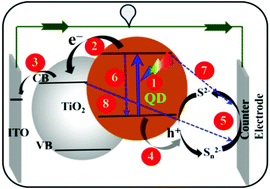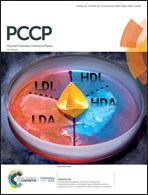Strategies for extending charge separation in colloidal nanostructured quantum dot materials
Abstract
Semiconductor colloidal metal chalcogenides (II–VI) in the form of quantum dots (QDs) and different heterostructures (core/shell, alloys, etc.) are of extensive interest in scientific research for both a fundamental understanding and technological applications because of their quantized size and different optical properties; however, due to their small size, the exciton (bound electron and hole) experiences a strong Coulombic attraction, which has a remarkable impact on the charge separation and photophysical properties of QDs. Thus, to achieve an efficient charge separation, numerous attempts have been made via the formation of different heterostructures, QD/molecular adsorbate (either organic or inorganic) assemblies, etc. These hybrid materials ameliorated the absorption of the incident light as well as charge separation. This article reviews the strategies for extending charge separation in these colloidal nanocrystals (NCs), which is one of the crucial steps to elevate the solar to electrical energy conversion efficiency in a quantum dot-sensitized solar cell (QDSC). The article summarizes the benefits of co-sensitization and experimental shreds of evidence for the multiple charge transfer processes involved in a QDSC. Studies have shown that in the co-sensitization process, prolonged charge separation occurs via the dual behavior of the molecular adsorbate, sensitization (electron injection) and capture of holes from photoexcited QDs. This perspective emphases band edge engineering and control of charge carrier dynamics in various core/shell structures. The impact of colloidal alloy NCs on charge separation and interesting photophysical properties was recapitulated via the steady-state and time-resolved photoluminescence (PL) and femtosecond transient absorption spectroscopic techniques. Finally, the prolonged lifetime and extent of charge separation for these hybrid NCs (or the composites) assisted in the development of a better light harvester as compared to the case of their pure counterparts.



 Please wait while we load your content...
Please wait while we load your content...